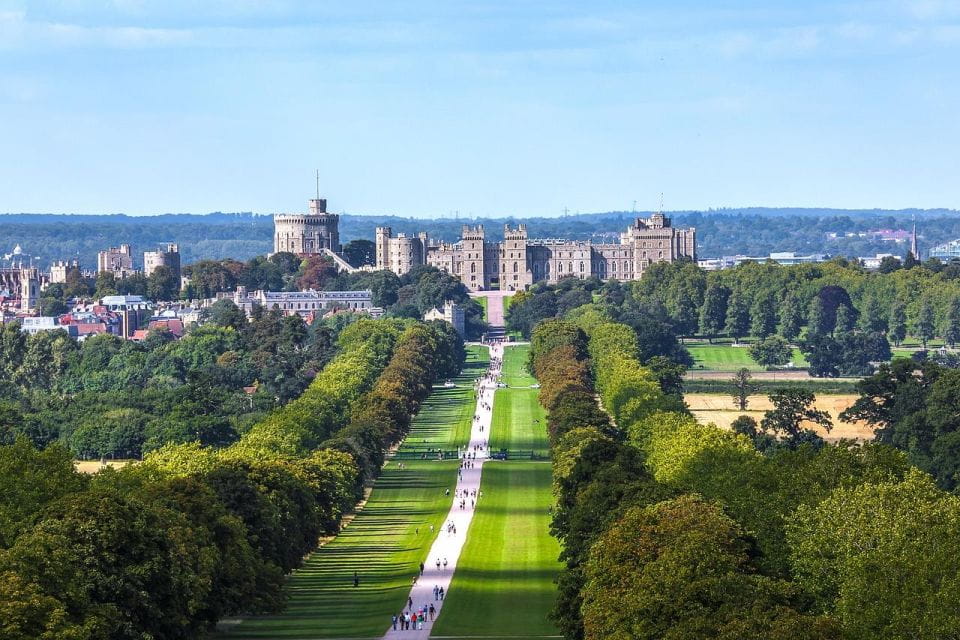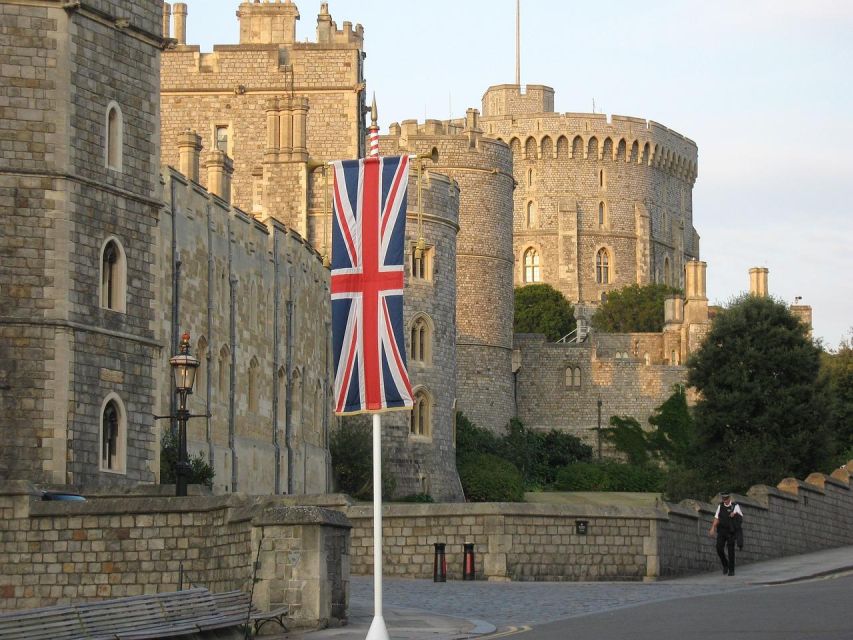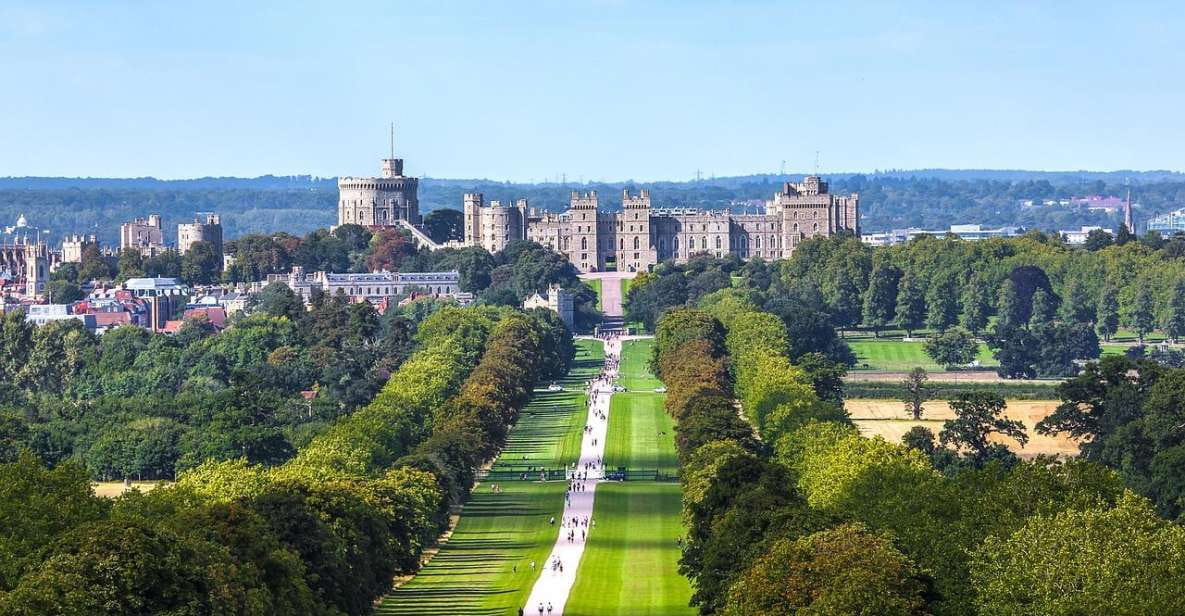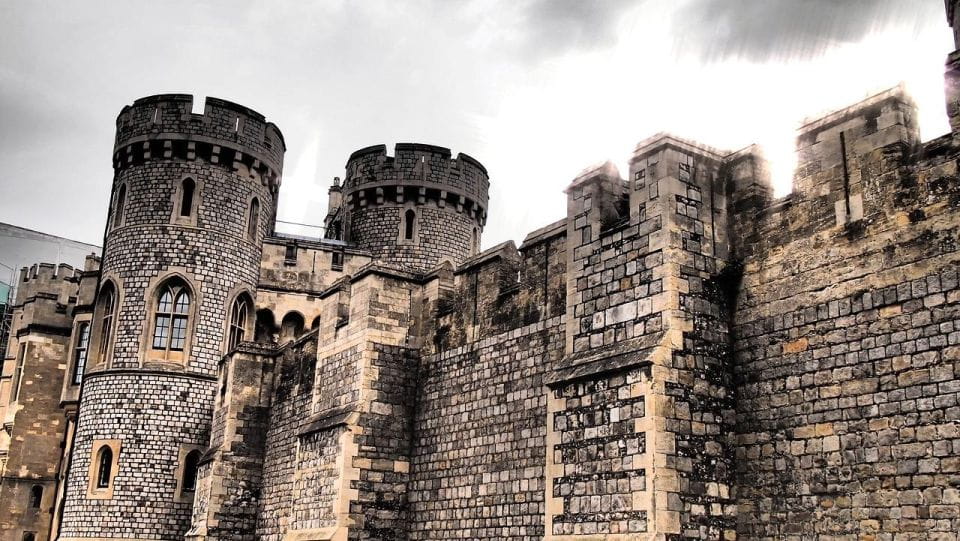Embark on an exclusive royal experience by exploring the captivating legacy of Windsor Castle and Hampton Court Palace. This iconic tour offers a unique glimpse into Britain’s storied past, immersing visitors in the grandeur and tumultuous history of these remarkable royal residences. From the world’s oldest occupied castle to the Tudor-era splendor of Hampton Court, each site unveils a captivating narrative that has shaped the nation. Discover the remarkable stories that have unfolded within these walls, and uncover the enduring influence of the British monarchy that continues to captivate audiences worldwide.
Key Points

- This exclusive royal experience allows visitors to enjoy the grandeur and history of Windsor Castle and Hampton Court Palace.
- Hampton Court Palace’s Tudor roots date back to 1515 and is linked to the tumultuous reign of King Henry VIII.
- The King’s Beasts statues at Hampton Court Palace showcase the grandeur and legitimacy of the Tudor dynasty.
- Windsor Castle is the world’s oldest and largest occupied castle, having served as a military headquarters and prison during the English Civil War.
- Both royal residences have undergone extensive renovations by successive British monarchs, preserving their enduring legacy.
Exclusive Royal Experience

This tour offers an unparalleled royal experience, allowing visitors to enjoy the grandeur and history of two of England’s most iconic landmarks – Windsor Castle and Hampton Court Palace.
At Windsor Castle, guests will explore the world’s oldest and largest occupied castle, which has served as a military headquarters, a prison, and a refuge for the royal family.
Meanwhile, Hampton Court Palace, with its Tudor architecture and connection to the reign of King Henry VIII, provides a captivating glimpse into England’s past.
Through this exclusive tour, travelers will gain a deeper appreciation for the rich tapestry of British royal history and the enduring legacy of these magnificent royal residences.
You can also read our reviews of more tours and experiences in London.
Tudor Palace History

Hampton Court Palace’s Tudor roots date back to 1515 when Cardinal Thomas Wolsey, a high-ranking cleric and close advisor to King Henry VIII, constructed the opulent palace as a lavish residence.
This grand Tudor structure, with its iconic red brick facade and striking architectural features, would later become inextricably linked to the tumultuous reign of the infamous Henry VIII.
The palace witnessed the ascent and downfall of many of Henry’s wives, including the tragic demise of Catherine Howard, who was arrested and taken to the Tower of London from Hampton Court.
Today, visitors can explore the palace’s magnificent interiors and imagine the intrigue and drama that unfolded within its walls during the Tudor era.
King’s Beasts Statues

The King’s Beasts are ten statues that adorn the exterior of Hampton Court Palace, each representing a heraldic animal symbolic of the Tudor dynasty’s lineage and power.
These imposing figures, carved from stone, were commissioned by King Henry VIII and installed in the 1530s as a visual representation of his royal ancestry.
Visitors can admire the mythical creatures, including a griffin, a white hart, and a white swan, which were carefully chosen to showcase the grandeur and legitimacy of the Tudor reign.
These captivating sculptures serve as a tangible link to the palace’s rich history, inviting guests to step back in time and imagine the splendor of Henry VIII’s court.
Olympic Cycling Venue
Hosting the Road Cycling Time Trial during the London 2012 Olympics thrust Hampton Court Palace into the global spotlight, as the historic Tudor estate provided a picturesque backdrop for the intense athletic competition.
Cyclists raced through the palace’s expansive grounds, their bikes whizzing past iconic landmarks like the Great Gatehouse and the East Front. Spectators gathered on the palace’s lawns, cheering on the athletes as they navigated the challenging course.
The event showcased Hampton Court’s enduring appeal, blending its rich history with the excitement of modern sports. Even after the Olympics had concluded, the palace’s connection to the games remained, cementing its status as a unique and captivating destination for visitors from around the world.
Oldest Occupied Castle
As the world’s oldest and largest occupied castle, Windsor Castle has withstood the test of time, serving as a commanding presence in the English landscape for over 950 years.
Initiated by William the Conqueror in 1070, this iconic fortification has evolved from a simple motte-and-bailey structure into an impressive stone fortress, housing generations of monarchs and playing pivotal roles throughout England’s tumultuous history.
From its use as a military headquarters and prison during the English Civil War to the renovations undertaken by successive monarchs like Charles II, George II, and George IV, Windsor Castle has continuously adapted to the changing needs of the times.
Today, this living piece of history remains a cherished symbol of the British monarchy and a testament to the enduring legacy of its past.
- Inner Circle Access of Stonehenge Including Bath and Lacock Day Tour From London
- Windsor Castle, Stonehenge, and Oxford Day Trip From London
- Stonehenge, Windsor Castle and Bath Day Trip From London
- London Walking Food Tour With Secret Food Tours
- The Premier Classic London: Private 4-Hour Tour in a Black Cab
- Changing of the Guard Guided Walking Tour in London
Military Headquarters and Prison
During the English Civil War, Windsor Castle served as both a military headquarters and a prison, underscoring its strategic importance and adaptability throughout the tumultuous period.
As a military headquarters, the castle provided a secure and commanding position for the royalist forces to plan and coordinate their operations.
Conversely, the castle’s formidable walls and fortifications made it an ideal place to imprison political prisoners and opponents of the crown.
This dual role highlights the castle’s multifaceted history, as it shifted between being a seat of power and a place of confinement, depending on the shifting tides of the conflict.
The castle’s ability to adapt to these changing circumstances is a testament to its enduring significance in the annals of English history.
Renovations by Monarchs
Throughout its storied history, Windsor Castle has undergone extensive renovations at the hands of several British monarchs, each leaving their indelible mark on the iconic structure.
Under the guidance of kings like Charles II, George II, and George IV, the castle evolved from a sturdy medieval fortress into a lavish royal residence.
Key renovations include:
- Charles II’s Baroque-inspired remodeling of the State Apartments, creating a grand and opulent living space.
- George II’s addition of the magnificent Grand Staircase, a striking architectural feature that remains a highlight for visitors today.
- George IV’s ambitious redevelopment of the castle’s interiors, infusing the spaces with a harmonious blend of Gothic and Regency styles.
These remarkable transformations have preserved Windsor Castle’s status as a living testament to the enduring legacy of the British monarchy.
Wartime Refuge for Royals
Windsor Castle’s role as a haven for the royal family during wartime periods is a remarkable chapter in its storied history.
When the threat of invasion loomed during World War II, the castle provided a secure and fortified sanctuary for King George VI, Queen Elizabeth, and their young daughters, shielding them from the perils that gripped much of the country.
The castle’s long history as a military stronghold and its impregnable defenses made it an ideal refuge, allowing the royals to remain safe while the nation weathered the storm.
The castle’s unwavering resilience and its steadfast role in protecting the monarchy during these tumultuous times underscores its enduring significance as a symbol of British strength and continuity.
Frequently Asked Questions
What Is the Best Time of Year to Visit?
The best time to visit depends on personal preferences, but generally spring and fall offer milder weather, smaller crowds, and vibrant scenery. Summer has peak tourist season, while winter provides a quieter, festive atmosphere at historic sites.
Can We Take Photos Inside the Palaces?
Visitors are generally allowed to take photos inside the palaces, but may be subject to restrictions in certain areas. It’s best to check with tour guides or staff upon arrival for the latest photography policies.
Are There Any Gift Shops on the Tour?
There are typically gift shops at both Windsor Castle and Hampton Court Palace, offering a wide range of souvenirs and memorabilia. Guests on the tour will have opportunities to browse and purchase items from these shops during their visits.
Is There a Cafeteria or Restaurant Available?
The tour offers a cafeteria and restaurant at both Windsor Castle and Hampton Court Palace, allowing visitors to enjoy a meal or refreshment during their day. These dining options provide a convenient way to recharge and continue exploring the historic sites.
How Accessible Are the Palaces for Those With Mobility Issues?
The palaces are generally accessible, with ramps, elevators, and mobility assistance available. However, some areas may have limited access for those with mobility issues. Visitors are advised to inquire about accessibility accommodations when booking to ensure a comfortable experience.
Recap
The Windsor Castle & Hampton Court Tour offers visitors a truly exclusive royal experience, immersing them in the grandeur and history of these iconic British landmarks.
From the world’s oldest occupied castle to the Tudor-era palace, this tour provides a deeper appreciation for the enduring legacy of these royal residences and the remarkable individuals who’ve shaped their rich histories.
More Tours in London
More Tour Reviews in London
Not for you? Here's more things to do in London we have recnetly reviewed
- London: Old City Walking Tour
- London: Private Flying-dress Photoshoot @jonadress
- Dragaoke – Drag Hosted Karaoke!
- London: British Museum Private Tour & Tickets Included
- London: The Magician’s Table – Up-Close Magic Show
- London: British Museum Highlights: Private Tour
- Tour a Piedi di Harry Potter a Londra
- London: The Great British Rock and Roll Music Walking Tour
- London: Christmas Lights Tour – With Christmas Music
- City(Tower) of London by LE GRAND – London’s Luxury Bus Tour
- Orpington: Silver Ring Making Workshop
- Secret Old London Walking Tour
